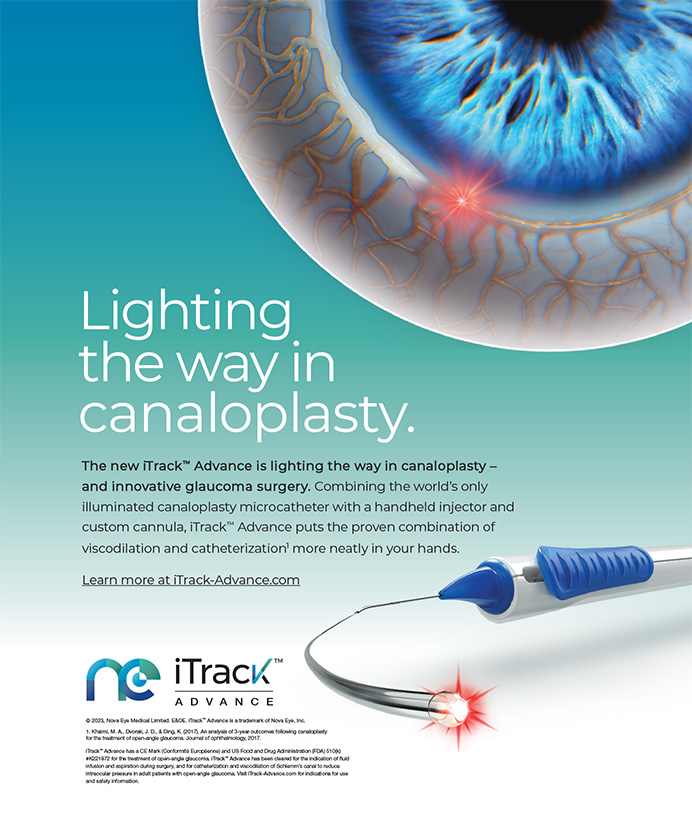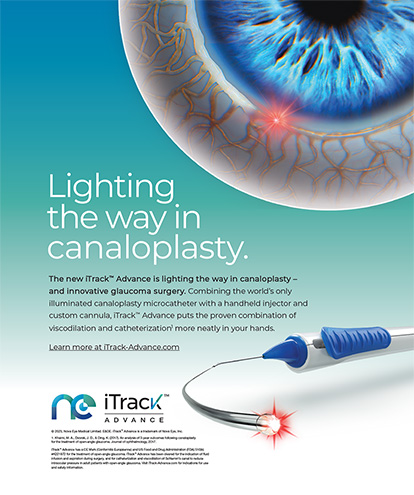Every day, thousands of patients worldwide undergo IOL implantation procedures, and although the overwhelming majority are performed successfully, there are instances in which IOLs must be removed and exchanged. Surgeons are replacing foldable IOLs for a number of reasons, which fall into several broad categories: incorrect IOL power calculation, dislocation and decentration, optical aberrations, and lens damage during the insertion procedure.
EXPLORING THE NEED FOR IOL REMOVAL
Incidences of these complications arise with nearly every type of foldable IOL, but the frequency with which each occurs changes significantly from lens to lens.1 A significant reason for IOL removal with nearly every type of lens is incorrect power calculation. This statistic reflects greatly upon our ability to accurately predict the proper lens power necessary for any given patient. Devices such as the IOLMaster (Zeiss-Humphrey, Dublin, CA) have helped us to increase the precision of our axial length measurements, but we must continue to improve upon all of the factors that significantly affect IOL power calculation formulas.
Three-piece foldable lenses are explanted most frequently. The three-piece monofocal silicone and acrylic models comprise approximately 64% of all lenses removed. However, these are also the most frequently used foldable IOLs. Although incorrect power calculation is the leading reason for removal between all types of lenses, patients who receive three-piece acrylics complain of optical aberrations, such as glare or arcs of light, with greater frequency than those with monofocal silicone IOLs. Dislocation, however, has been found to be more prevalent in the latter group. IOLs can move from the proper centration as a result of mechanical damages, such as kinked or broken haptics, improper initial placement, or because of changes in the zonular integrity with aging. It is important to remember that even a properly placed lens that shows no signs of damage may become displaced because of the contractile forces of the lens capsule itself. Significant incidence of lens damage was reported only among the one-piece silicone lenses, whereas the overwhelming percentage of three-piece multifocal silicone lens explantations was due to optical aberrations.1
The most common reason for explantation of the plate-style one-piece silicone IOLs is dislocation (Figure 1). Unfortunately, this often occurs after YAG capsulotomy, especially if it is performed within the first 6 months following implantation.Specific Symptoms Reported by Patients
Fortunately, pain and discomfort are not commonly reported in patients requiring IOL explantation. However, displacement could cause the lens to rub against the delicate structures of the uveal tract, particularly the iris and ciliary bodies, resulting in ocular inflammation, which could become painful. Additionally, if an IOL becomes malpositioned, it could cause an increase in intraocular pressure by causing pupillary block glaucoma.
The most commonly reported problematic visual aberration is glare, a multifactorial challenge that could come from a number of sources. Patients may experience glare from a truncated IOL edge, IOL dislocation, or from posterior capsule opacification. It is important to determine which of these is the exact cause for each individual patient, because the surgeon's treatment abilities will obviously decrease significantly if he or she treats for the wrong factor initially. A few patients have requested the removal of certain acrylic IOLs for cosmetic reasons, such as the occurrence of reflections. These reflections appear as an external flicker, because the front surfaces of such lenses are nearly flat and create a mirror-like effect.
PRINCIPLES OF IOL EXPLANTATIONPreoperative Considerations
Once you have decided to remove an IOL, there are certain considerations to address prior to the procedure, such as: What type of IOL is it? What are the characteristics of the lens? Is it a one-piece or a three-piece IOL? What do the haptics look like? Is there anything about the haptics that might make it more difficult to remove the lens, such as eyelets or kinks? With which lens will you replace the problematic IOL, assuming you can remove it successfully? Next, it is necessary to formulate a step-by-step plan in order to have the necessary equipment ready to perform the procedure. At the very minimum, you will need a variety of hooks and scissors, and vitrectomy capabilities are essential, as well as the ability to use a bimanual system, both for vitrectomy and for irrigation and aspiration. Finally, it is imperative to have an alternate plan in the event of unexpected complications and circumstances, such as a broken capsule or dehisced zonules.
Intraoperative Considerations
First, ensure that the patient is comfortable. Consider using a local anesthetic until you are experienced with the necessary techniques. Provided that the lens is in the bag, the key step in the procedure is to find a space between the lens and the anterior capsule. After locating this opening, which is usually right at the haptic/optic junction, inject viscoelastic, viscodissecting the lens capsule open. In most cases, the anterior capsule does not fuse to the posterior capsule at the haptic/optic junction, but if it does, it usually fuses around it, so you can still find a small opening where it could not fuse around the point where the haptic meets the optic.
The viscodissection will open the bag for 360º, and at this point, you are usually able to rotate the lens within the bag, freeing it from any residual attachments within the lens capsule. The next goal is to prolapse each of the haptics out of the capsule and up into the anterior chamber, where you will then be able to remove the lens relatively easily. Once you have successfully moved the lens to the front of the eye, there are a number of options for the removal process, assuming you intend to explant it through a 3- to 3.2-mm incision. If the lens is acrylic, you can refold it inside the eye and bring it out folded, or cut it in half and remove each piece separately. If it is a silicone lens, you may be able to use the Dodick technique, in which you would cut the lens three quarters of the way across its diameter and grasp one end of it. As a result of the hinge that you have created by cutting it nearly all the way across, you can then slide the lens out of the eye quite easily, because essentially you have created two half-moon-shaped pieces 3 mm in width, and one piece will pull out right behind the other. Because silicone lenses cannot be refolded, they must either be cut into pieces or the entire lens can be removed through an enlarged opening. This decision should be based on the comfort level of the surgeon.
If the lens has simply come out of position and its power does not need to be changed, rather than going through a difficult removal process, it is often easier to fixate the lens to the iris with some modification of a McCannel-type suture. If you are uncomfortable with attempting this, removing the IOL and replacing it with an anterior chamber lens is certainly another alternative. Whether or not you perform a vitrectomy, use topical steroids and topical Voltaren (Novartis AG, Duluth, GA) to try to minimize the chances of cystoid macular edema.
CONCLUSION
A number of advancements have already been made by industry and surgeons alike to reduce the incidence of the problems that lead to IOL removal. For example, the squared-off edges of some designs, touted as extremely valuable in the prevention of posterior capsular opacification, have been modified to diminish the optical aberrations found in some of the earlier designs. Recently developed injection devices have been designed not only to make the incision sizes uniform, but also to minimize the potential for damage to the lens, and surgeons are continuing to learn how to make ideal IOL-patient matches.
With an expected increase in the number of patients needing cataract surgery after LASIK or another refractive procedure, the most important surgical factor is the improvement of the accuracy of lens power calculations. We also need to ensure that we create an intact anterior capsulorhexis, and that we can place the lens inside of the lens capsule consistently, handling it properly with either an insertion device or folding forceps. Given all these factors, surgeons must make a difficult decision in choosing the IOL they wish to use, depending on the specific needs of their patients and the potential complications accompanying each of the lens designs.
Stephen S. Lane, MD, is a Clinical Professor at the University of Minnesota, and is in private practice at Associated Eye Care in St. Paul, Minnesota. He does not hold a financial interest in any of the products mentioned herein. Material extracted from Dr. Lane's speech titled “IOL Exchange: Principle and Practice” presented at the Royal Hawaiian Eye Meeting in Waikoloa, Hawaii, on January 21, 2002. Dr. Lane may be reached at (651) 275-3000; sslane@associatedeyecare.com1. Mamalis N, Spencer TS: Complications of foldable intraocular lenses requiring explantation or secondary intervention. 2000 Survey Update, J Cataract Refract Surg 27:1310-1317, 2001


